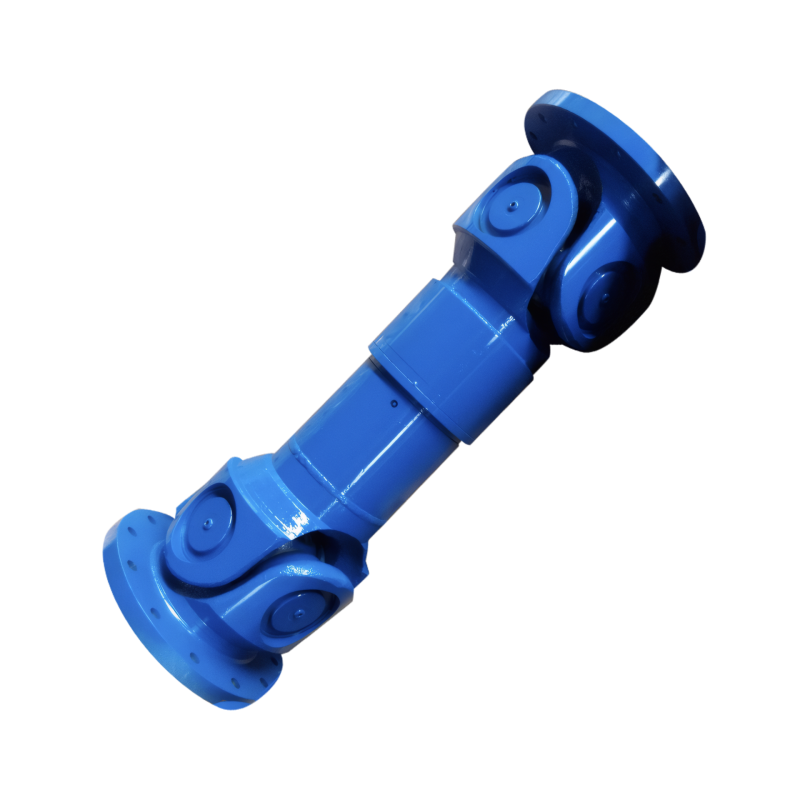The function of the splined shaft of the drive shaft
The Role of Spline Shafts in Transmission Systems
Spline shafts are a critical component in mechanical transmission systems, serving as a bridge between rotating parts to ensure synchronized motion and reliable power transfer. Their unique design enables them to handle high torque loads while maintaining precision alignment, making them indispensable in automotive, aerospace, and industrial machinery applications.
Core Functions in Torque Transmission
The primary purpose of a spline shaft is to transmit rotational force (torque) between components without slippage. Unlike single-key connections, spline shafts distribute load across multiple teeth, significantly increasing contact area and reducing stress concentration. This multi-tooth engagement allows them to handle higher torque capacities compared to traditional keyed systems. For example, in automotive transmissions, spline shafts connect the engine’s crankshaft to the clutch assembly, ensuring seamless power delivery during gear shifts. Their ability to maintain consistent torque transfer under varying loads makes them ideal for high-performance applications where reliability is paramount.
Precision Alignment and Anti-Rotation
Spline shafts excel at maintaining component alignment during operation. The interlocking teeth create a self-centering mechanism that prevents radial misalignment, even under heavy loads. This feature is crucial in applications like steering systems, where precise alignment ensures directional control. The teeth’s geometry also resists axial movement, eliminating the need for additional locking mechanisms in many cases. In wind turbine gearboxes, spline connections maintain alignment between the rotor hub and generator shaft, ensuring efficient energy conversion despite constant vibrational forces.
Adaptability in Complex Motion Systems
One of the most distinctive advantages of spline shafts is their ability to accommodate both rotational and linear motion. This dual functionality is achieved through sliding spline designs, where the inner spline (shaft) can move axially within the outer spline (hub). This adaptability is essential in automotive drivetrains, where the driveshaft must change length to compensate for suspension movement during vehicle operation. The sliding action is facilitated by specialized lubrication channels and wear-resistant coatings, ensuring smooth operation over thousands of cycles. In robotic arms, similar designs enable precise positioning by combining rotational and translational motion in a single compact assembly.
Structural Efficiency and Compact Design
Spline shafts enable engineers to create more compact transmission systems compared to alternative connection methods. Their multi-tooth design distributes stress more evenly, allowing for thinner shaft walls without sacrificing strength. This efficiency is particularly valuable in electric vehicle powertrains, where space optimization directly impacts battery range and vehicle dynamics. The ability to integrate multiple functions—such as torque transmission, alignment, and sliding motion—into a single component reduces part count and assembly complexity. In medical imaging equipment, compact spline connections enable the precise rotation of heavy CT scanner gantries within confined spaces.
Material and Manufacturing Considerations
The performance of spline shafts depends heavily on material selection and manufacturing precision. High-strength alloys like 40Cr steel are commonly used, with heat treatment processes such as quenching and tempering to achieve surface hardness values between HRC45–50. This combination provides excellent fatigue resistance and wear properties. Advanced manufacturing techniques like CNC grinding ensure tooth profiles meet tight tolerances, with deviations typically kept below 0.01mm. In aerospace applications, vacuum carburizing and ion nitriding treatments further enhance surface durability under extreme operating conditions.
Maintenance and Reliability Enhancements
Spline shafts are designed for long-term reliability with minimal maintenance requirements. The multi-tooth engagement distributes wear evenly across the contact surfaces, extending service life compared to single-key connections. Many designs incorporate self-lubricating materials or grease reservoirs to reduce friction and prevent corrosion. In offshore drilling equipment, spline couplings with composite bushings demonstrate exceptional resistance to saltwater corrosion and abrasive particles. Regular inspection protocols focus on measuring tooth wear and backlash, with replacement typically required only after millions of operational cycles.
 Customized design of drive shafts for special vehicles
Customized design of drive shafts for special vehicles
 The durability of the drive shaft for off-road vehicles
The durability of the drive shaft for off-road vehicles
 Introduction to the structural strength of truck drive shaft
Introduction to the structural strength of truck drive shaft
 The layout of the drive shaft for a four-wheel drive vehicle
The layout of the drive shaft for a four-wheel drive vehicle
 简体中文
简体中文 English
English
